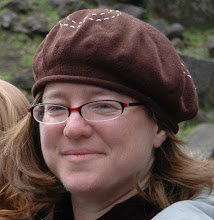Colonial Disease and Illness
 Epidemics ravaged both white and Native populations in colonial New England. The source of these epidemics is not surprising: low resistance, poor sanitation, and inadequate medical knowledge. As Dr. William Douglass put it in 1760 about white medicine, “more die of the practitioner than of the natural course of the disease” (Duffy 4; cites Douglass). Relatively few doctors in colonial American had attended medical school: in 1721 only one of Boston’s ten “doctors” had a degree (Duffy 7). The drugs used were prescribed in excessively large and unmeasured qualities. Even if given properly the prescriptions were of questionable use: even Cotton Mather, a famous scientist, advocated the use of urine as an unparalleled “Remedy for Humane Bodies” (Duffy 8). As seen by the cures prescribed by Dr. Zerobabel Endecott, colonial medicine often appears in retrospect to be more like spells than medicine. Bleeding patients and inducing vomiting were common cures (Duffy 8-9).
Epidemics ravaged both white and Native populations in colonial New England. The source of these epidemics is not surprising: low resistance, poor sanitation, and inadequate medical knowledge. As Dr. William Douglass put it in 1760 about white medicine, “more die of the practitioner than of the natural course of the disease” (Duffy 4; cites Douglass). Relatively few doctors in colonial American had attended medical school: in 1721 only one of Boston’s ten “doctors” had a degree (Duffy 7). The drugs used were prescribed in excessively large and unmeasured qualities. Even if given properly the prescriptions were of questionable use: even Cotton Mather, a famous scientist, advocated the use of urine as an unparalleled “Remedy for Humane Bodies” (Duffy 8). As seen by the cures prescribed by Dr. Zerobabel Endecott, colonial medicine often appears in retrospect to be more like spells than medicine. Bleeding patients and inducing vomiting were common cures (Duffy 8-9).  In addition to epidemics, famine and dietary sicknesses such as scurvy took their toll (Duffy 11).
In addition to epidemics, famine and dietary sicknesses such as scurvy took their toll (Duffy 11). This gravestone from the Dutch colonial island of Curacao notes how Isaac Haim Senior (a Sephardic Jew) suffered infinite martyrdoms in his illness (“Padezido Infenittos / Martirios na Enfermindade”). The bottom portion of the stone depicts his deathbed scene (upper right). The original of Isaac's gravestone is in Beit Haim Blenheim (Curacao) and was damaged by pollution from the nearby oil refinery. This reproduction is in the synagogue museum.
For more on colonial illness and disease and for full citations, see the Indian Converts Collection



0 Responses to “Colonial Disease and Illness”: